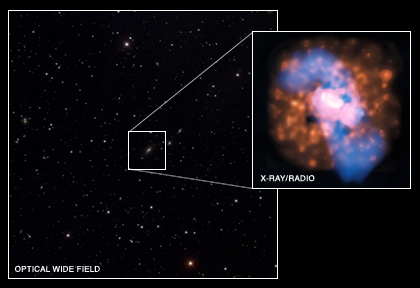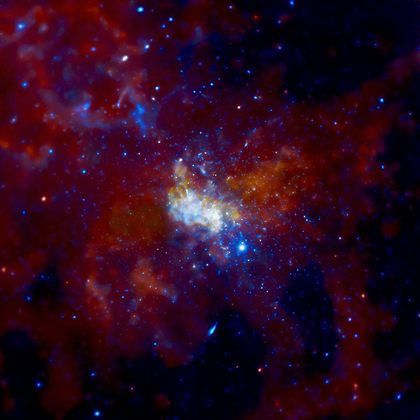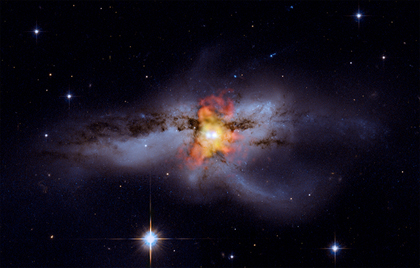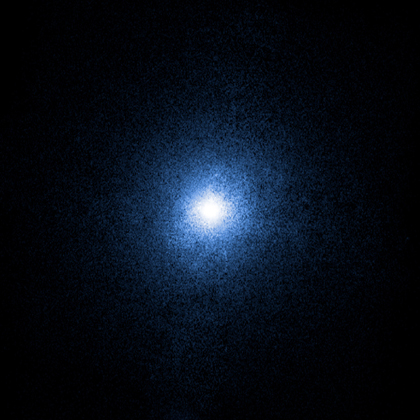Black Holes
Black Hole Blows Big Bubble
Submitted by chandra on Wed, 2010-07-07 15:29
Peering Into The Heart of Darkness
Submitted by chandra on Tue, 2010-01-05 09:45Astronomers have long known that the supermassive black hole at the center of the Milky Way Galaxy, known as Sagittarius A* (or Sgr A* for short), is a particularly poor eater. The fuel for this black hole comes from powerful winds blown off dozens of massive young stars that are concentrated nearby. These stars are located a relatively large distance away from Sgr A*, where the gravity of the black hole is weak, and so their high-velocity winds are difficult for the black hole to capture and swallow. Scientists have previously calculated that Sgr A* should consume only about 1% of the fuel carried in the winds.
Black Holes Go "Mano A Mano"
Submitted by chandra on Tue, 2009-10-06 12:02An Oldie But Goodie
Submitted by chandra on Tue, 2009-09-01 11:44Last week, we released the Chandra image of an object known as Cygnus X-1. At first glance, Cygnus X-1 might not look that important – even with Chandra’s excellent X-ray vision – but this is one case where it’s good not to judge a book by its cover.
Ghost Remains After Black Hole Eruption
Submitted by chandra on Thu, 2009-05-28 14:25This is a composite image showing a small region of the Chandra Deep Field North. Shown in blue is a deep image from the Chandra X-ray Observatory and in red is an image from the Multi-Element Radio Linked Interferometer Network (MERLIN) an array of radio telescopes based in Great Britain. An optical image from the Sloan Digital Sky Survey (SDSS) is shown in white, yellow and orange.
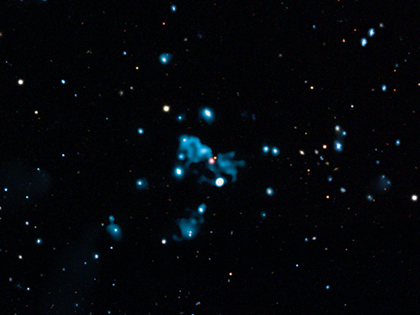
Erratic Black Hole Regulates Itself
Submitted by chandra on Wed, 2009-03-25 14:20This optical and infrared image from the Digitized Sky Survey shows the crowded field around the micro-quasar GRS 1915+105 (GRS 1915 for short) located near the plane of our Galaxy. The inset shows a close-up of the Chandra image of GRS 1915, one of the brightest X-ray sources in the Milky Way galaxy. This micro-quasar contains a black hole about 14 times the mass of the Sun that is feeding off material from a nearby companion star. As the material swirls toward the black hole, an accretion disk forms.
Pages
Please note this is a moderated blog. No pornography, spam, profanity or discriminatory remarks are allowed. No personal attacks are allowed. Users should stay on topic to keep it relevant for the readers.
Read the privacy statement

